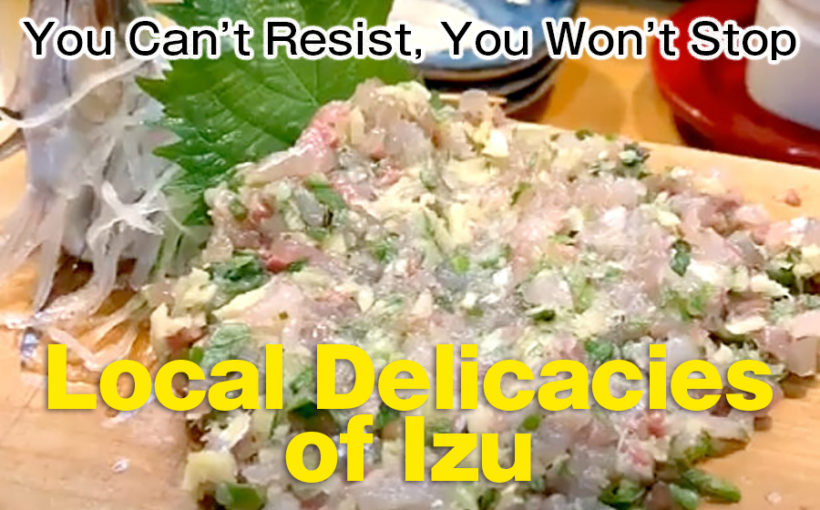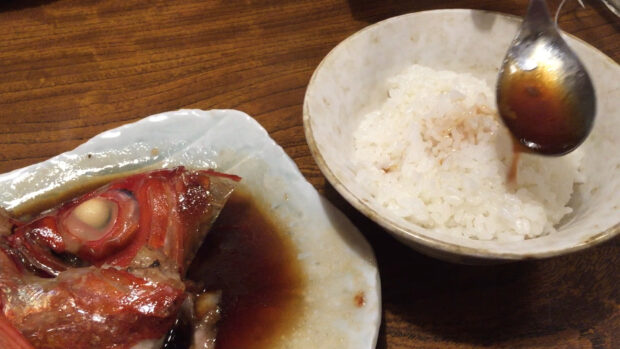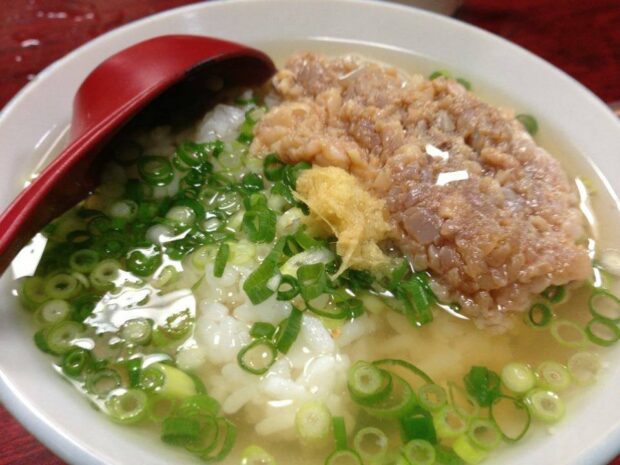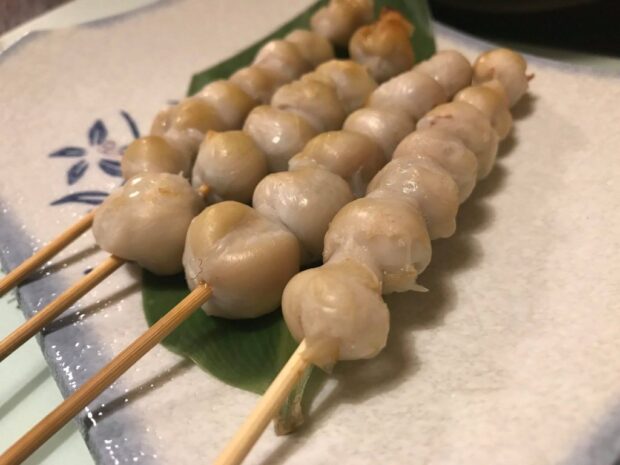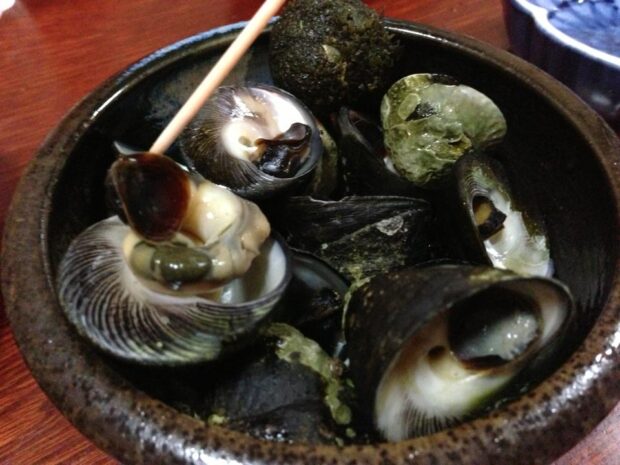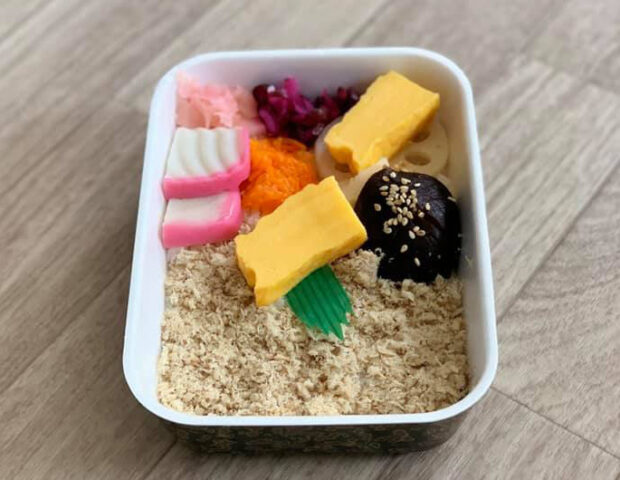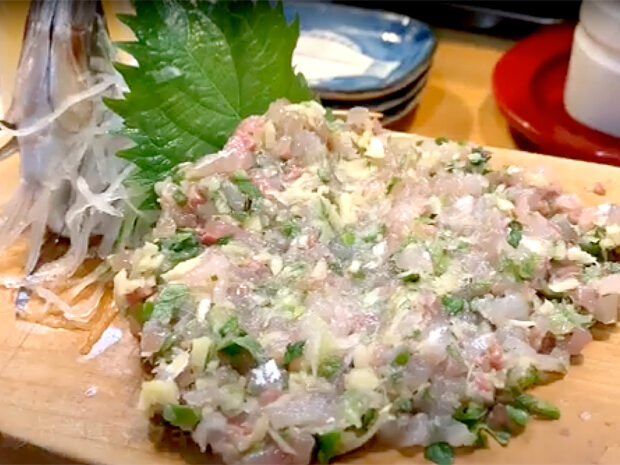Japan’s Izu Peninsula, a promontory surrounded by the sea, is renowned for being a town where you can savor fresh seafood. Situated just 2-3 hours away from Tokyo and blessed with hot springs, it has prospered as a tourist destination for a long time.
Certainly, being a tourist destination, there are appealing seafood dishes designed to impress visitors. Nevertheless, in addition to these, there are local dishes that have been savored by locals as an extension of their home-cooked meals but are seldom found in hotels and inns.
This time, we will introduce such authentic local seafood dishes. Why not indulge in some local-style cuisine?
Let’s begin with ‘Jinta’.
Jinta refers to small horse mackerels, typically 2-5 cm in size. Although advancements in refrigeration technology have somewhat increased their availability, their size means they are seldom found in urban areas.
However, these little fish are incredibly delicious! They can only be enjoyed in Ito during the early summer to summer.
Simply coat them with tempura batter and deep-fry, making it a classic home-cooked or fisherman’s dish. The flesh is tender even to the bones, and when eaten whole from head to tail, the rich fish flavor spreads throughout your mouth. It pairs exceptionally well with beer!
Japanese cuisine features classic combinations like beer and edamame, but the combination of edamame or Jinta is just as irresistible. It’s hard to stop once you start – it’s that good!
Most izakayas (Japanese pubs) in various places in Izu used to serve them, but in recent times, such places have become less common.
Usually, high-end ryokans (traditional Japanese inns) do not serve them as they are considered a kind of home-cooked dish.
Sometimes, these fish are prepared as ‘nanbanzuke,’ a marinated dish with a slightly spicy and sour flavor. You might occasionally find them at inns.
Kinme Nitsuke (Simmered Golden Eye Snapper)
You’ve probably heard of Kinme Nitsuke if you’re familiar with Izu. However, there’s a unique local way to enjoy this dish. It might not be a method you’d use in public, but locals pour the sauce over rice and enjoy it. There’s a bit of embarrassment in doing so, but it’s truly delicious, and the temptation is hard to resist.
Additionally, there’s something called ‘hone-yu’ where the remaining fish bones are placed in a bowl with the sauce and hot water is added. More broth is extracted from the bones, creating a rich soup.
How to eat Kinme Nitsuke with Local style
Nevertheless, any remaining sauce can be saved in a container. When it solidifies, you can put it on hot rice the next day, and the heat from the rice melts the sauce, turning it back into a sauce. Some people even put a raw egg on top! It might sound unbelievable, but in Japan, it’s common to eat raw eggs over rice, and this dish, while unconventional, is one of the favorites among Japanese. To the Japanese, it’s considered quite a luxurious way to enjoy egg-topped rice.
While the golden eye snapper is now considered a high-end fish, about 30-40 years ago, when distribution wasn’t as advanced, it was a common fish on Ito’s dining tables. Nowadays, it’s rarely consumed locally, except during special occasions.
Aji no Tataki and Magochazuke
Aji no Tataki
Magochazuke
Aji no Tataki is said to originate from Izu. It’s served hot on top of rice and is poured with a light broth, creating a dish known as ‘Magochazuke.’ It’s a dish that’s so unpalatable that it’s said to be named after the idea that you must eat it right away when it’s still hot, and you should stop talking while you eat it.
The combination of hot broth and slightly cold Aji no Tataki creates an indescribable flavor. Please give it a try.
As an aside, in Izu, Aji (horse mackerel) is generally eaten with ginger. So, when you’re served a sashimi platter, you’ll often find two small dishes – one with ginger and one with wasabi. Most tourists wonder what the second dish is for, but now you know!
Mebo (Scorpionfish)
One of the things you should try when you visit Ito is the dried mouth of the squid. When it’s grilled, it becomes crispy, and when you bite into it, the umami oozes out. It pairs wonderfully with sake. There are versions with cartilage removed and with cartilage, and because of the shape of the cartilage, it’s sometimes called ‘Karasu and Tonbi’ (crow and kite). In the past, it was a common accompaniment to drinking, and after a party, you’d find piles of cartilage leftover.
You can also fry it, put it in tempura, and it’s delicious as well!
Shittaka
Local people cherish Shittaka more than sazae (turban shell). It has less bitterness in its liver compared to sazae, making it a delicacy suitable even for children. In the past, it was cheap and a common dish for banquets, but nowadays, it’s relatively more expensive than sazae and is rarely seen.
Soboro (Box Sushi)
During the Showa era (1926–1989), when distribution was not as developed as it is today, housewives would often make soboro from fish that couldn’t be eaten immediately.
It could be made with any fish, but the local touch is there, and in Usami and Ito, it’s mainly made with mackerel. Nowadays, it’s not commonly made, but during local festivals, it might be served as box sushi. It’s not incredibly tasty, but it’s soul food for the people of Ito.
Manbo(ocean sunfish)
This doesn’t get distributed to the city. Why? Because it melts and turns into water within hours. It has a very subtle taste, so people dip it in soy sauce to add some flavor intentionally. It’s not something that’s caught on purpose; it’s usually caught by accident when it gets entangled in fishing nets.
Aototataki
Aototataki is a fishermen’s dish that can only be made when green chili peppers are available. Fish and green chili peppers are pounded together. It’s spicy and, combined with the salty soy sauce, makes you crave more sake. It can be made with any kind of fish, but in Ito, swordfish and horse mackerel are common.
How about it? All of these dishes are deeply rooted in local culture. Please come to Ito and enjoy them!

